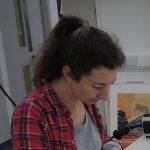When I first received this 18th-century garment to conserve I was puzzled, as I had never heard of a banyan before. A man’s nightgown or an informal coat worn at home for ease, made from silk damask, a quick search via the internet informed me.
This particular garment was made around 1735-45, from English yellow silk with a blue-grey floral design, and belonged to the Earls of Stair family. It consists of the outer coat and internal waistcoat. Although unfamiliar to me at first, over the vast numbers of hours that I spent conserving it I am certain I know this object better now than anyone!
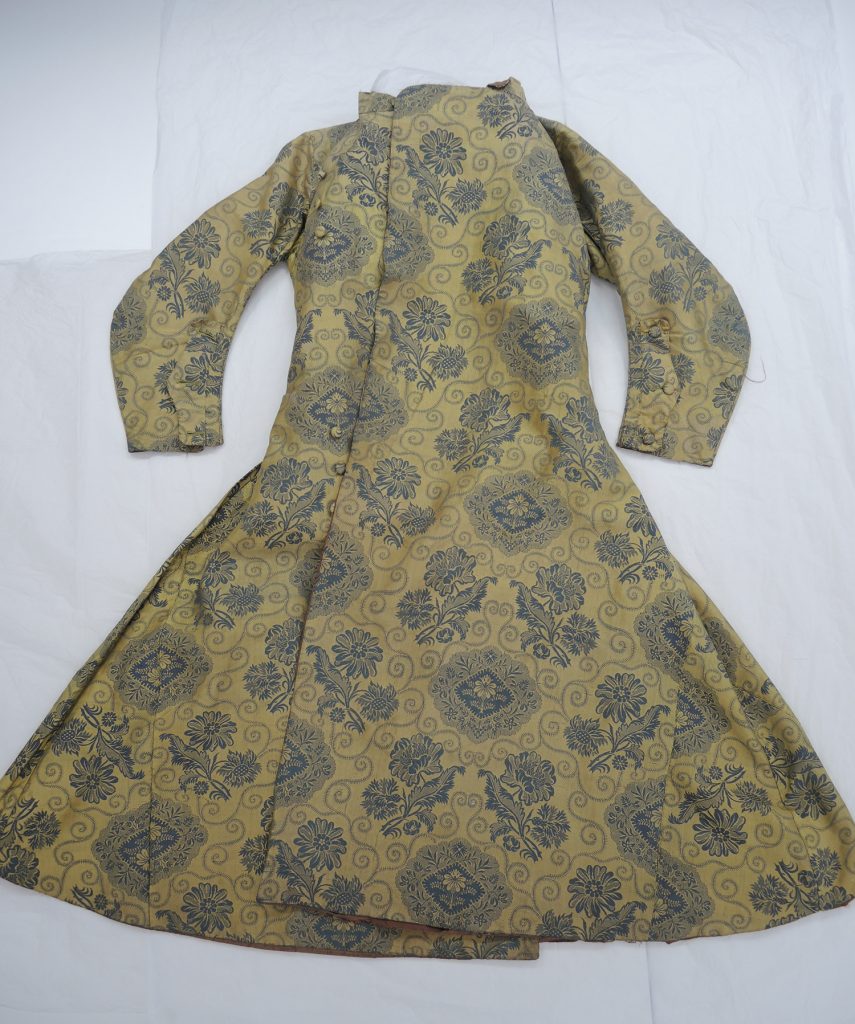
The banyan was heavily soiled, stained and creased. The silk was generally weak, with areas of wear and damage, but it was the lining which was in the worst condition, with long tears and splits. My treatment was divided into two general stages: wet cleaning, and providing support for the weakened areas. So far I have finalised the first stage.
Wet cleaning: theory and reasoning
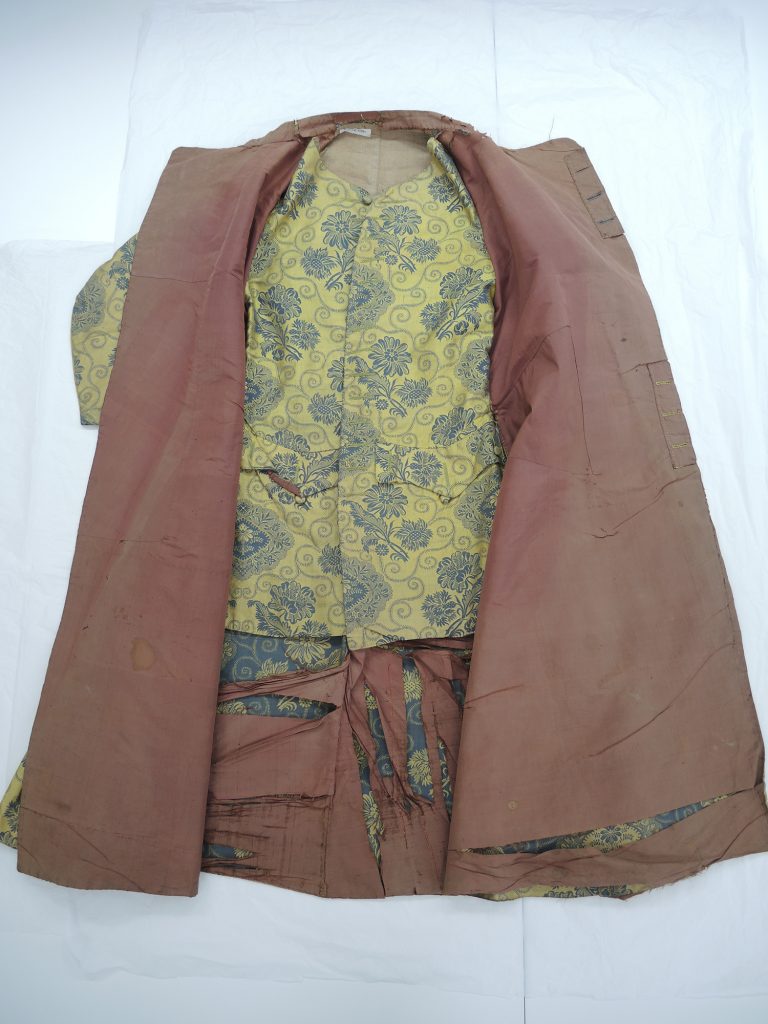
As textile conservators, we are equipped with a number of tools and methods for cleaning historical textiles. Placing them in water with an addition of conservation grade detergent is one of them, but it is always a very difficult decision requiring lots of consideration and preliminary testing. Having recently attended a workshop on new cleaning methods, my mental list of those considerations grew even larger. One of the methods discussed and tested advocated using water as the main cleaning agent and improving its performance by modifying its properties. I was eager to test this theory and the banyan was a perfect candidate.
I wanted to immerse the banyan in water if possible to reintroduce moisture into the very stiff fibres, which would hopefully lead to relaxing the creases as well as releasing the soiling. I wanted to avoid adding detergent into the wash bath because the time needed to rinse it out from the multiple layers would be very lengthy. This would require a lot of handling and manoeuvring of the wet and heavy garment, which could lead to even more damage. During my testing, an organic solvent proved effective but it seemed a little too aggressive on fragile silk. Additionally, choosing the solvent method would require implementing great health and safety precautions to keep me safe from toxic vapours during the process.
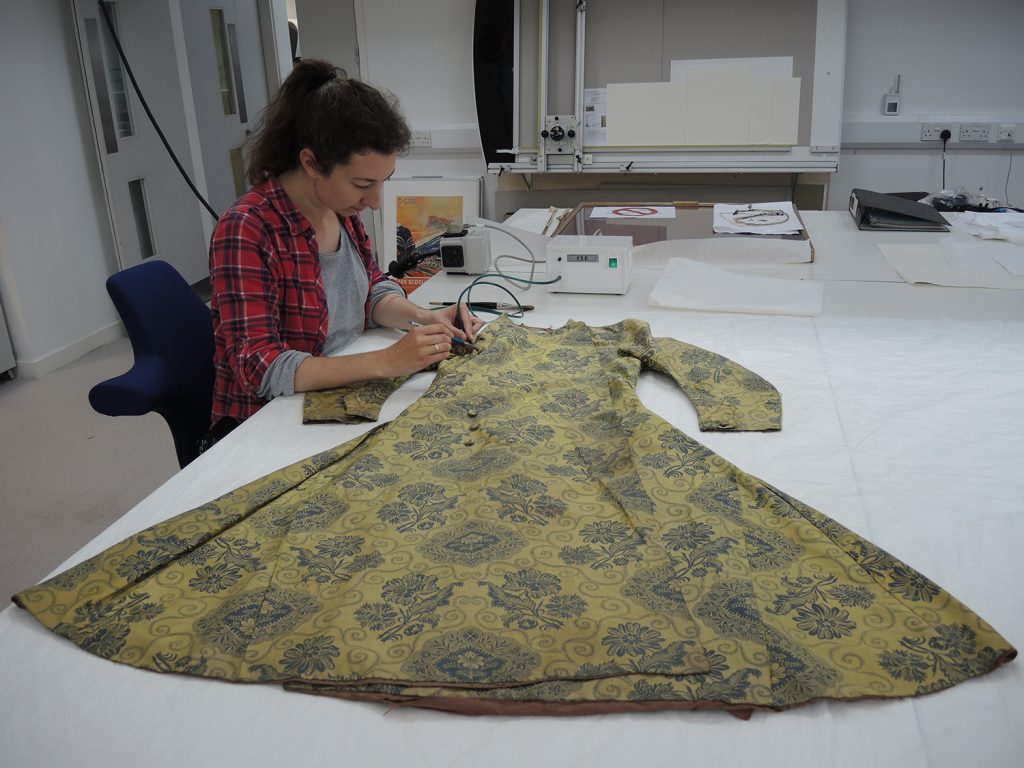
This decision forced me to get familiar with the concept of conductivity, an aspect of science I had never anticipated refreshing for the purpose of my work. Conductivity is the ability of the material to conduct an electrical current. The higher the value of conductivity, the higher the presence of salt and metal ions, which are damaging to the fibres and accelerate their deterioration. If I could find out this value, I could design a cleaning solution which would lead to a controlled exchange of ions and decrease the number of harmful residues within the structure of the fabric.
However, in order to find out what the conductivity of the textile was, I had to introduce water without getting the object wet. Luckily, this conundrum can be solved thanks to gelling substances. Using a gel, in this case Agarose, allows one to create small control samples which, when placed directly onto a fabric, will suck up the residue from the surface and enable a reading to be taken with a conductivity meter.
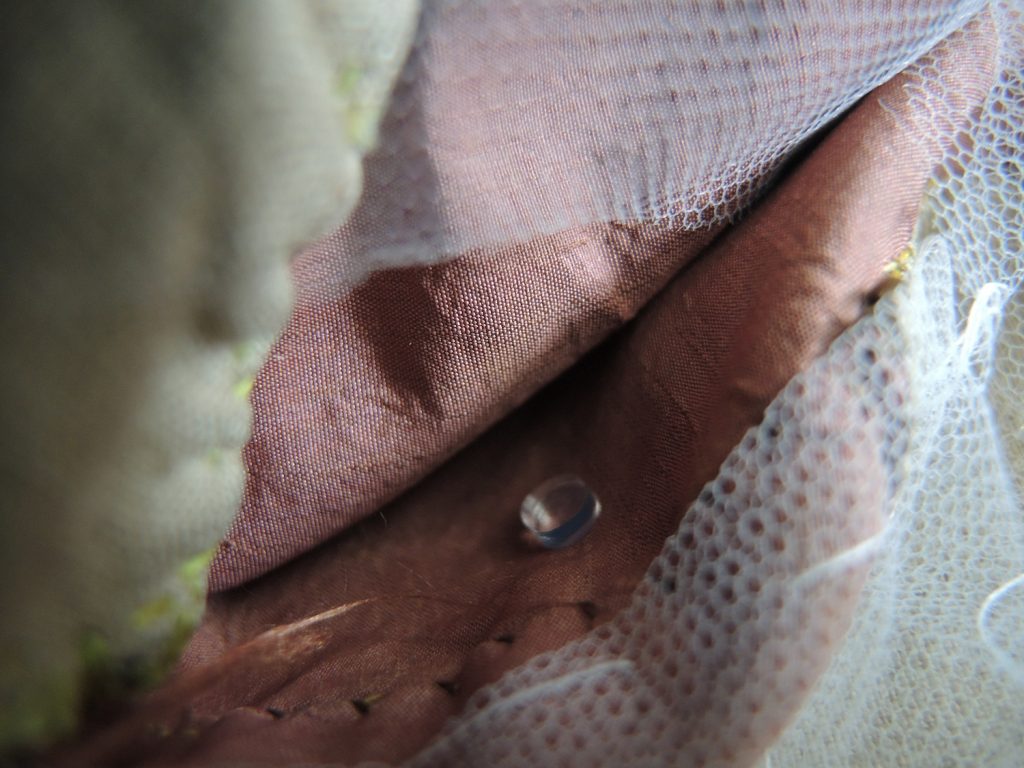
Once I knew the conductivity and the pH of the textile I started designing cleaning solutions and testing them to see what worked best. These were water-based with the addition of small amounts of chelating agents and buffers. In theory, at a molecular level, these chemicals facilitate solubilisation of relatively insoluble salts or metal ions and allow their removal through cleaning and rinsing. Alongside I tested organic solvents, pure water and water with an addition of detergent for comparison. The results were varying but I found a mix of water with a tiny addition of two weak acids to be the most effective.
After I identified the right cleaning solution I had to do further tests to see if there might be any dye bleeding and how the wooden buttons would respond to prolonged contact with the solution, for example, if they might release any substance which could stain the silk further. I also prepared the object by stitching net over the most vulnerable tears and holes to prevent any further damage during the cleaning process.
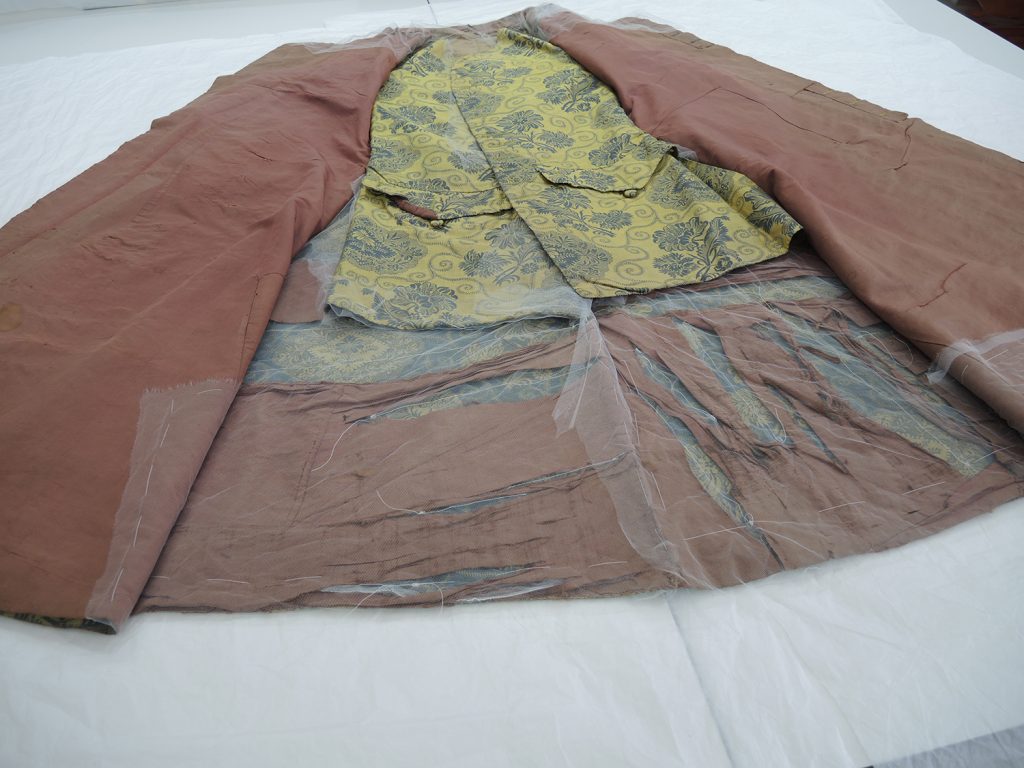
Wet cleaning: The process
If I can be perfectly honest, I had plan B ready. Part of me did not believe that cleaning without detergent is possible and that the two chemicals diluted to such an extent could prove effective. I felt as if I were cleaning it with pure water, which did not provide any result in the preliminary testing. Just in case, I prepared the organic solvent and gathered the necessary personal protective equipment. Nevertheless, I commenced wet cleaning of the banyan with the chosen cleaning solution. The fabric of the banyan took a while to wet out, but once it did there was a noticeable dirt release into the water almost immediately. And despite all the testing, there was also some minor dye loss from the lining. In a traditional wet clean with detergent, bubbles are usually produced which can restrict the ability to view the object whilst submerged. In this instance, I could keep a close eye on the object and I acted immediately to shorten the process. The chemistry happened, the freed ions were removed and any acid left would evaporate. My efforts were directed into drying the object, aligning the fabrics and making sure there was no dye transfer.
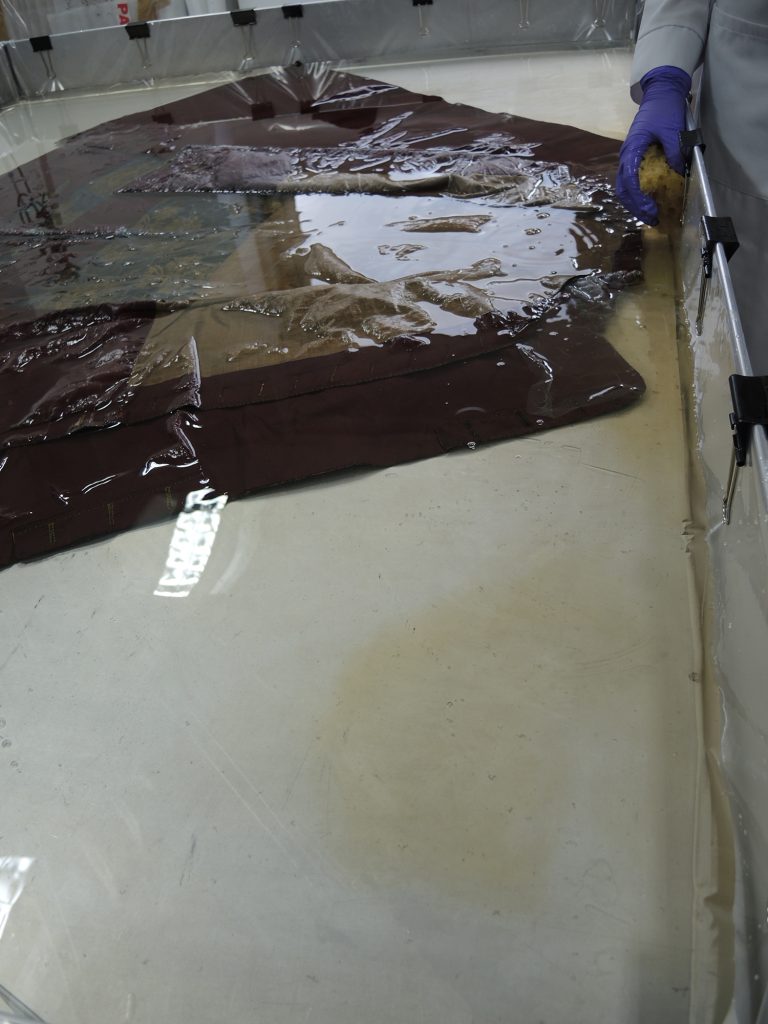
The verdict
The banyan was washed and I did not have to resort to plan B. The dye loss was minor and, as can happen with cleaning historic textiles, only occurred while in the wash bath. The silk regained its shine and lustre and the colours are now more vibrant. I did not manage to remove all the stains but this was never my goal. I tested the conductivity of the banyan once again and the readings were reduced either by half or by two-thirds, which proves the successful removal of salt and metal ions from within the fibres to some extent.
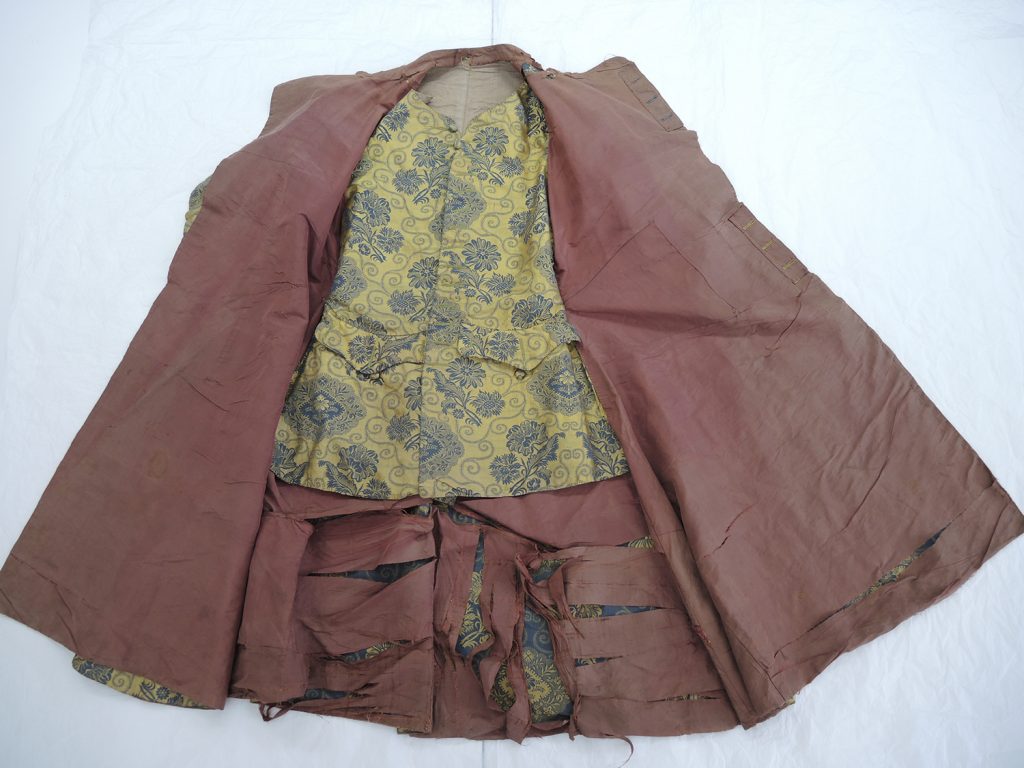
This treatment was a great learning experience at so many levels. It gave me a chance to test a method, see how this can work on the actual object rather than in theory or on small test samples, and proved how important it is to invest in one’s own personal development by sharing and updating new discoveries within the profession. It also shows that despite an extensive range of preliminary testing, unexpected results can take place and the treatment might need to be adapted at the last minute. Now I can concentrate on providing the stitched support to the weak areas. Judging by their diversity it will take me a considerable amount of time but look out for the next instalment to read on and see how the banyan is being preserved.
